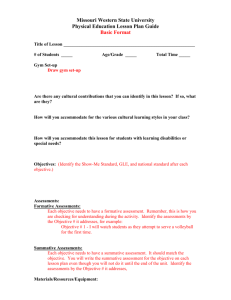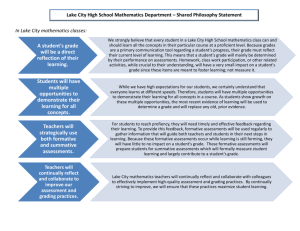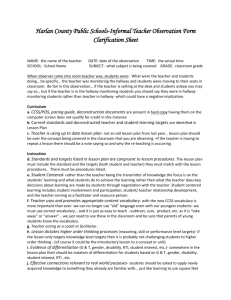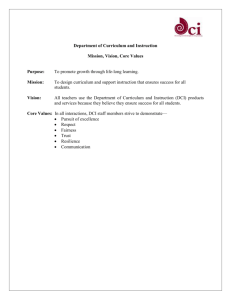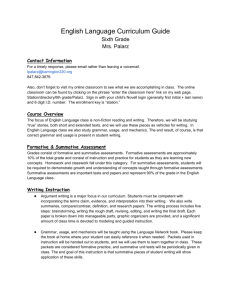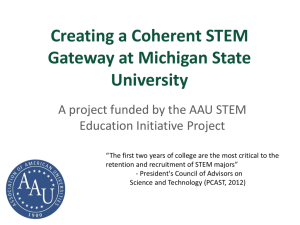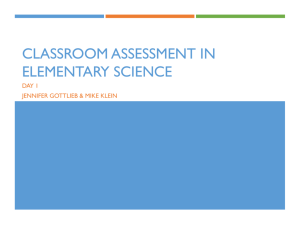Word
advertisement
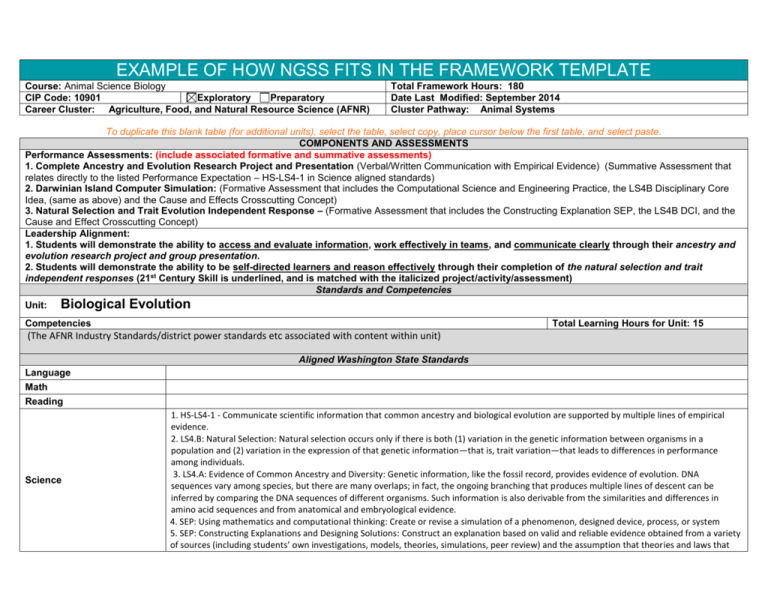
EXAMPLE OF HOW NGSS FITS IN THE FRAMEWORK TEMPLATE Course: Animal Science Biology CIP Code: 10901 Exploratory Preparatory Career Cluster: Agriculture, Food, and Natural Resource Science (AFNR) Total Framework Hours: 180 Date Last Modified: September 2014 Cluster Pathway: Animal Systems To duplicate this blank table (for additional units), select the table, select copy, place cursor below the first table, and select paste. COMPONENTS AND ASSESSMENTS Performance Assessments: (include associated formative and summative assessments) 1. Complete Ancestry and Evolution Research Project and Presentation (Verbal/Written Communication with Empirical Evidence) (Summative Assessment that relates directly to the listed Performance Expectation – HS-LS4-1 in Science aligned standards) 2. Darwinian Island Computer Simulation: (Formative Assessment that includes the Computational Science and Engineering Practice, the LS4B Disciplinary Core Idea, (same as above) and the Cause and Effects Crosscutting Concept) 3. Natural Selection and Trait Evolution Independent Response – (Formative Assessment that includes the Constructing Explanation SEP, the LS4B DCI, and the Cause and Effect Crosscutting Concept) Leadership Alignment: 1. Students will demonstrate the ability to access and evaluate information, work effectively in teams, and communicate clearly through their ancestry and evolution research project and group presentation. 2. Students will demonstrate the ability to be self-directed learners and reason effectively through their completion of the natural selection and trait independent responses (21st Century Skill is underlined, and is matched with the italicized project/activity/assessment) Standards and Competencies Unit: Biological Evolution Competencies Total Learning Hours for Unit: 15 (The AFNR Industry Standards/district power standards etc associated with content within unit) Aligned Washington State Standards Language Math Reading Science 1. HS-LS4-1 - Communicate scientific information that common ancestry and biological evolution are supported by multiple lines of empirical evidence. 2. LS4.B: Natural Selection: Natural selection occurs only if there is both (1) variation in the genetic information between organisms in a population and (2) variation in the expression of that genetic information—that is, trait variation—that leads to differences in performance among individuals. 3. LS4.A: Evidence of Common Ancestry and Diversity: Genetic information, like the fossil record, provides evidence of evolution. DNA sequences vary among species, but there are many overlaps; in fact, the ongoing branching that produces multiple lines of descent can be inferred by comparing the DNA sequences of different organisms. Such information is also derivable from the similarities and differences in amino acid sequences and from anatomical and embryological evidence. 4. SEP: Using mathematics and computational thinking: Create or revise a simulation of a phenomenon, designed device, process, or system 5. SEP: Constructing Explanations and Designing Solutions: Construct an explanation based on valid and reliable evidence obtained from a variety of sources (including students’ own investigations, models, theories, simulations, peer review) and the assumption that theories and laws that describe the natural world operate today as they did in the past and will continue to do so in the future. 5. CCC: Cause and Effects: Empirical evidence is required to differentiate between cause and correlation and make claims about specific causes and effects. 6. CCC: Patterns: Different patterns may be observed at each of the scales at which a system is studied and can provide evidence for causality in explanations of phenomena. The standards listed above include the Performance Expectation statement that includes the integration of a SEP (Science and Engineering Practice), CCC (Crosscutting Concept) and DCI (Disciplinary Core Idea) that are tied to the summative assessments used by course. Also listed are any of the standards that may be used in formative assessments, which are flexible to include alternative SEPs and CCCs to reach the same content within the DCI instruction. Social Studies Speaking and Listening Writing The 21st Century Skills should be taught and assessed throughout the course.This table should be included at the end of this document. 21st Century Skills Check those that students will demonstrate in this course: LEARNING & INNOVATION INFORMATION, MEDIA & TECHNOLOGY SKILLS LIFE & CAREER SKILLS Creativity and Innovation Think Creatively Work Creatively with Others Implement Innovations Information Literacy Access and /evaluate Information Use and Manage Information Flexibility and Adaptability Adapt to Change Be Flexible Media Literacy Analyze Media Create Media Products Initiative and Self-Direction Manage Goals and Time Work Independently Be Self-Directed Learners Critical Thinking and Problem Solving Reason Effectively Use Systems Thinking Make Judgments and Decisions Solve Problems Communication and Collaboration Communicate Clearly Collaborate with Others Information, Communications and Technology (ICT Literacy) Apply Technology Effectively Social and Cross-Cultural Interact Effectively with Others Work Effectively in Diverse Teams Productivity and Accountability Manage Projects Produce Results Leadership and Responsibility Guide and Lead Others Be Responsible to Others



